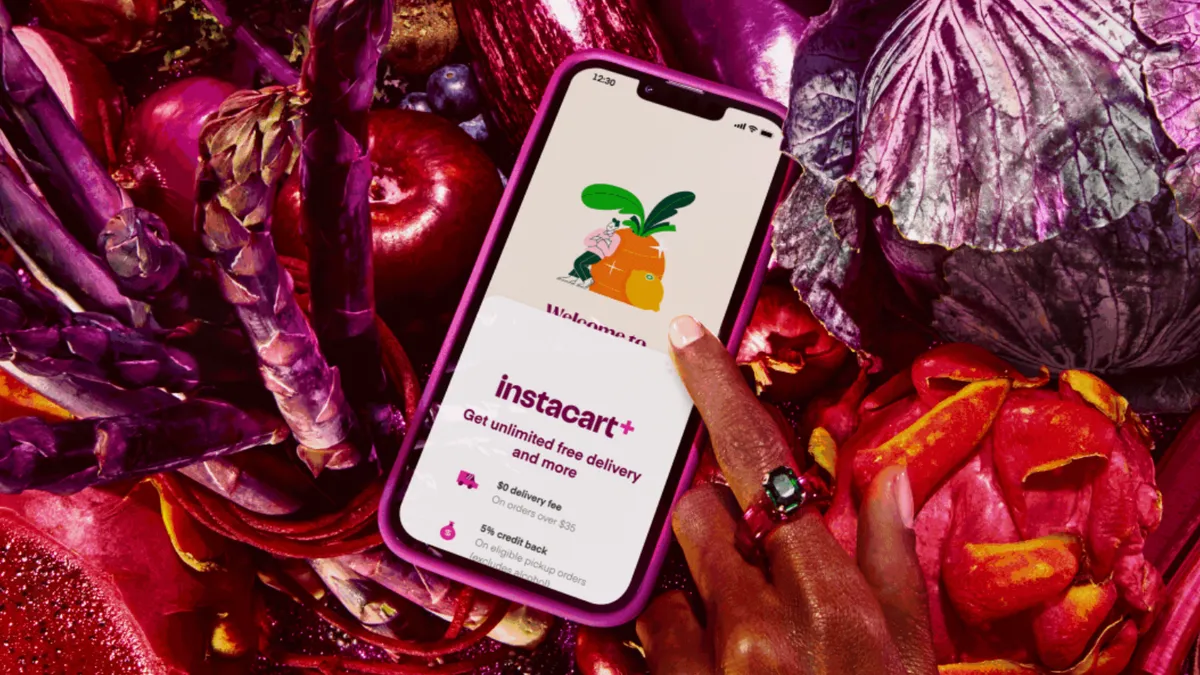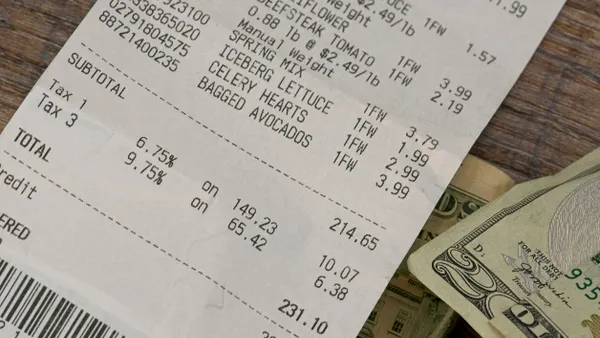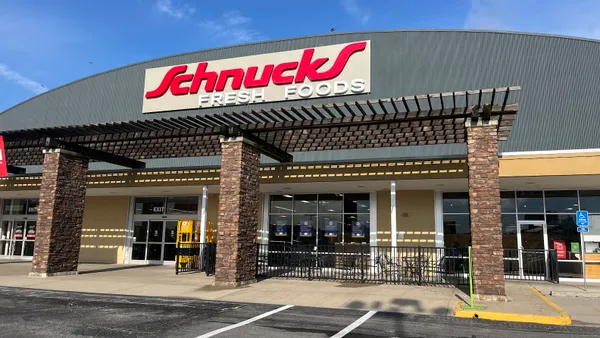Dive Brief:
- Instacart posted solid results on Tuesday for its fourth quarter, which ended Dec. 31, 2023. During the quarter, the company brought in $803 million in total revenue, up 6% year over year, and grew its number of orders by 5% to 70 million.
- Shoppable displays and video formats helped drive the $243 million the company posted in advertising and other revenue for the quarter, up 7%.
- Instacart unveiled plans to lay off roughly 250 workers and also disclosed that its chief technology officer, chief operating officer and chief architect are leaving, with plans to only backfill the CTO role.
Dive Insight:
In announcing its earnings results, Instacart pointed to its scale as a key lever as it looks to remain the leader of online grocery adoption and highlighted how its trove of customer data is a key competitive advantage for the company.
For example, Instacart is connecting its data on customer behavior with its advertising solutions as more retailers show interest in standing up retail media networks, CEO Fidji Simo said on the earnings call.
Executives said the company has been investing in discounts, promotions and other price-focused incentives “more than we ever have before.” Price sensitivity among shoppers has posed a particular challenge for e-commerce providers, which add fees and often sell products at higher prices than in stores.
Instacart “overhauled” its incentive systems over the past year, Simo said.
“Incentives allow us to better target behaviors that we believe will lead to stronger customer acquisition, resurrection and habituation,” Instacart CFO Nick Giovanni said on the call.
In a letter to shareholders, Instacart spotlighted recently added product features, including offering an “in-season” tag for produce, providing ETAs for pickup orders and displaying ads on its Caper Carts. While advertising capabilities on Caper Carts are “very early,” Simo told investors that Instacart is looking to connect customer loyalty data with retail media to drive purchasing behaviors.
For example, when a customer drops cookies into the cart, the cart could serve up an ad, like chocolate Dreyer’s ice cream, based on loyalty data of that customer’s preferences as well as provide a recipe for an ice cream cookie sandwich and in-store navigation to where the ice cream is, she said.
Instacart’s average order value of $113 in Q4 was up slightly year over year.
Simo said that Instacart continues to increase its share of sales among digital platforms in
Q4 and 2023 year-over-year for both small and large baskets. While Simo said that Instacart’s “core use case is the weekly shop,” the company also sees the importance of offering the convenience of small baskets.
“[We are] very strong at converting a small basket customer to a large basket customer,” she said.
Instacart is focusing on priority delivery, which the company rolled out in 2021 to give customers the option of faster delivery speeds, Simo said. In Q4, 38% of customers chose priority delivery, up from the 29% who did so in the same period a year prior.
“Nearly 25% of our typical priority orders are now delivered in 30 minutes or less, rivaling the attempts of ultrafast or convenience services but doing so profitably and with 10-20x as much selection,” according to the shareholder letter.
For fiscal year 2023, Instacart recorded $3 billion in total revenue, up 19%, and $871 million in advertising and other revenue, up 18%.
For the first quarter of FY2024, Instacart forecasts that order growth will lead to gross transaction value landing between $8 billion and $8.2 billion, up 7% to 10%, respectively. The company is also predicting adjusted EBITDA ranging from $150 million to $160 million.











